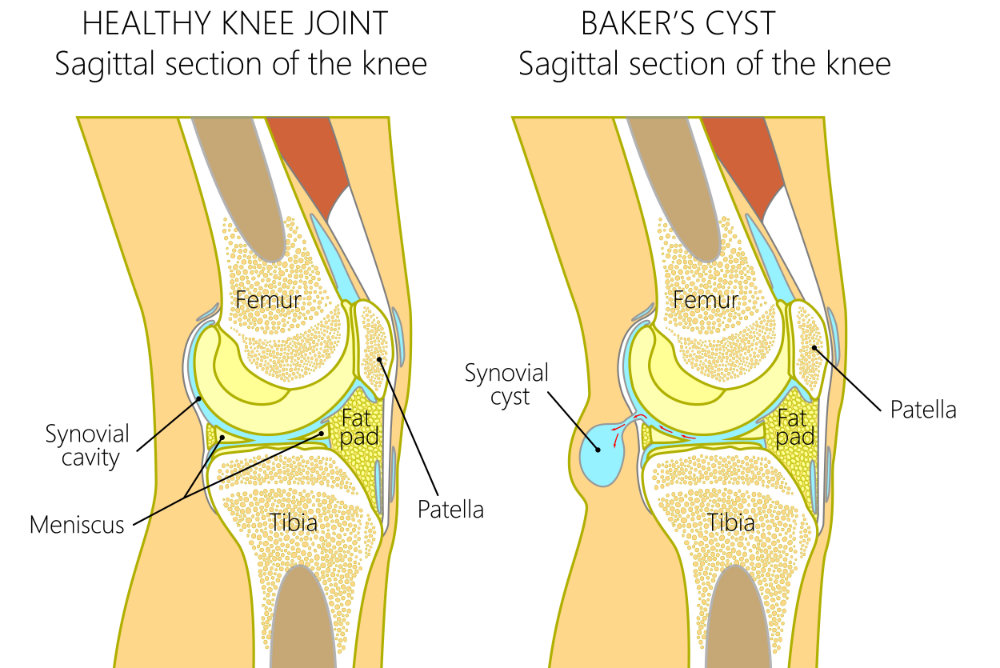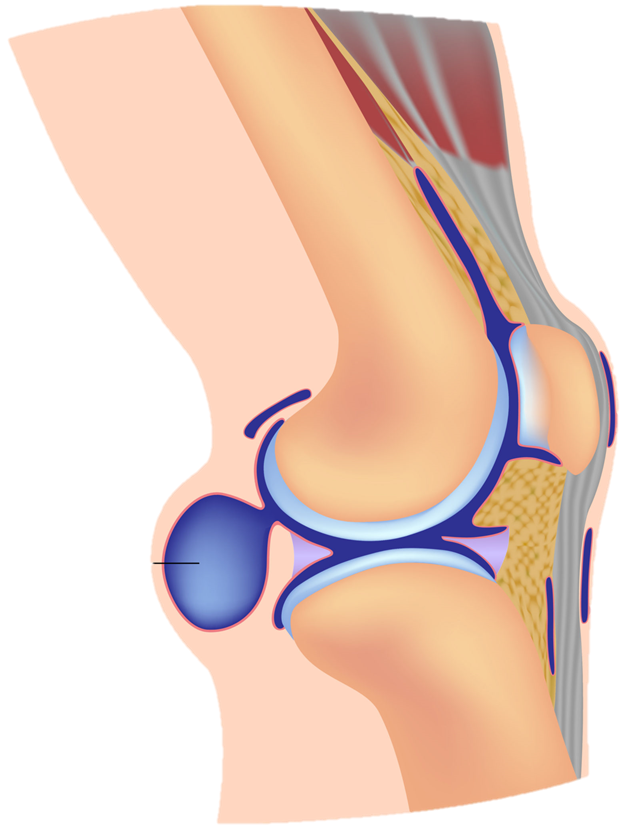A Baker’s cyst, also referred to as a popliteal cyst or “bulge-knee,” is a fluid-filled sac located in the back of the knee. The knee joint is filled with a special type of fluid (called synovial fluid) that helps cushion the spaces between the bones, ligaments, and muscles in order to prevent wear and tear on the joint.
Symptoms
- Swelling behind the knee and/or in the calf
- Pain when extending or bending the knee
- Stiffness or being unable to bend or flex the knee due to the swelling behind the knee
- A lump behind the knee that increases and decreases in size
Anatomy
In the hollow at the back of the knee is a bursa or small sack of fluid used to help lubricate the joint. A fairly uncommon condition is when the back of the knee joint gets swollen and causes the bursa to swell. Usually, some underlying disorder of the knee such as a meniscus injury or arthritis causes an increase in synovial fluid. This is the knees natural lubricating fluid. If too much is produced, it spills into the bursa at the back of the knee causing it to increase in size and swell up. As a result, a Bakers cyst occurs. n younger athletes the cause may be a torn cartilage meniscus may be the underlying cause. In older athletes, arthritis is more likely to be a possible cause.

The patella tendon connects the bottom of the kneecap to the shin bone. It attaches at a bony protrusion called the tibial tuberosity.
Osgood Schlatters Disease is a painful reaction at this point. Over time it becomes progressively worse as tendon pulls at the growth plate at the top of the tibia.
With repeated trauma, new bone grows back as part of the healing process. This causes an obvious prominent bony lump felt at the tibial tuberosity.
Treatment
- Resting the affected knee
- Icing the inflamed area
- Change training methods if possible for example substitute swimming, cycling or cross-trainer machine for running.
- Non-steroidal anti-inflammatory medications (NSAIDs) to reduce inflammation
- It is possible the symptoms may simply disappear by themselves.
- Draining the fluid from the knee, which you’re doctor will do using ultrasound guidance
Contact Me
Let's chat!
Need more information? Send me an email or drop me a line. I don’t bite!
- Charlotte@rehabontheroad.co.uk
- 07971448719

